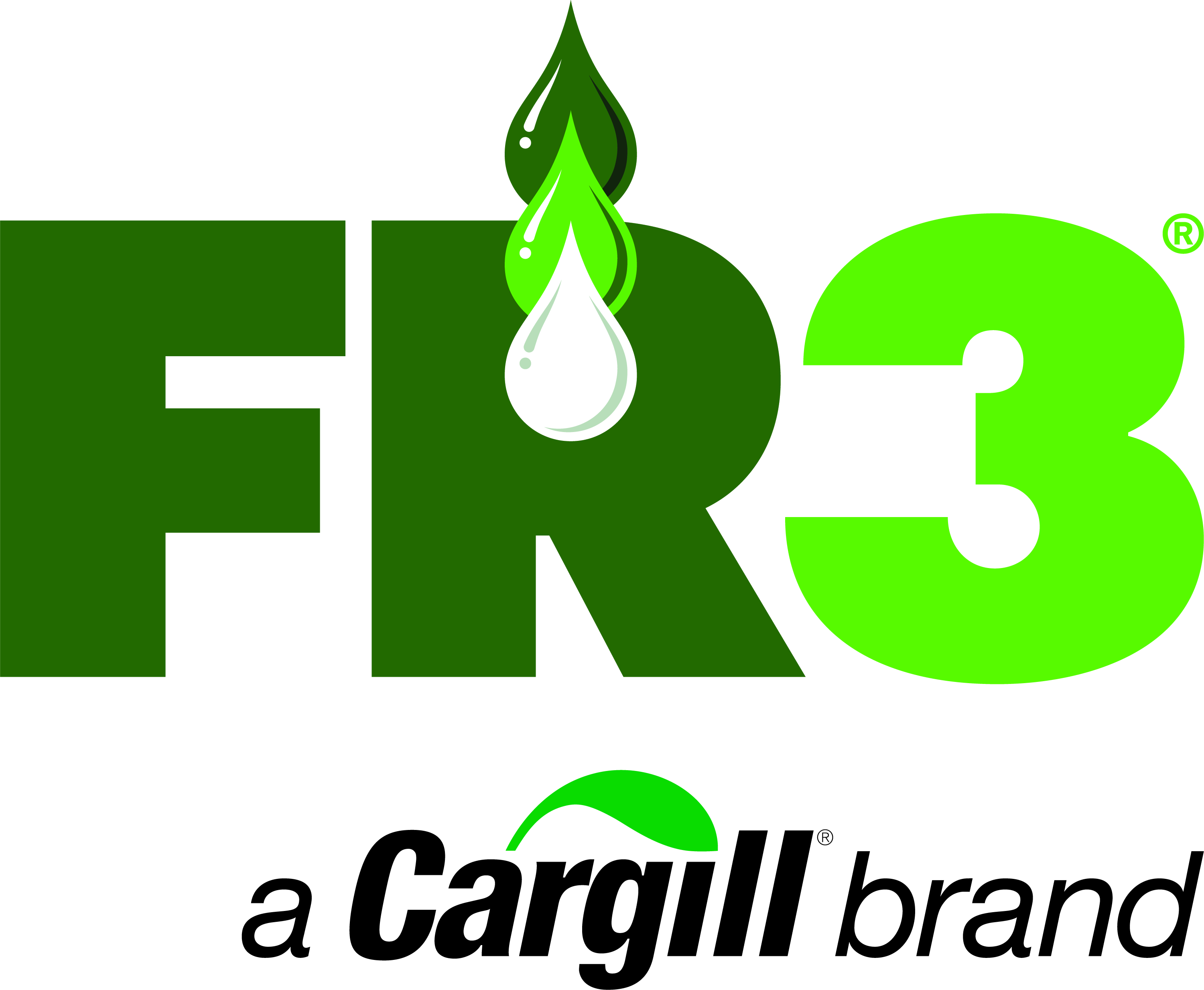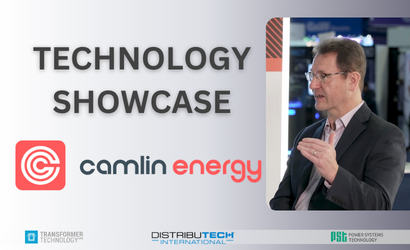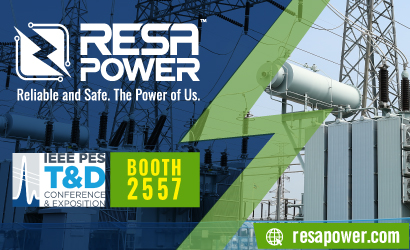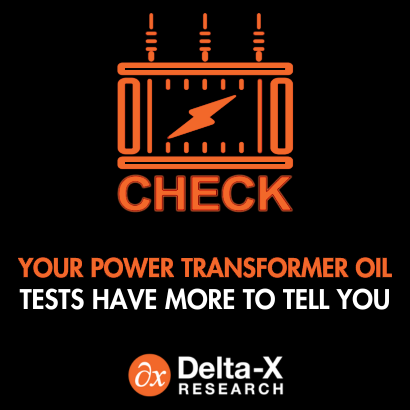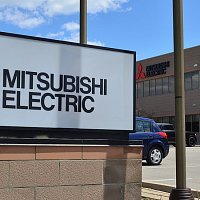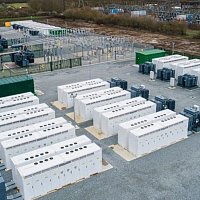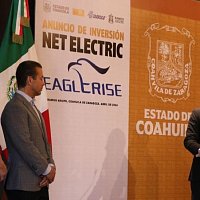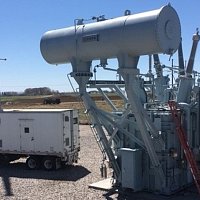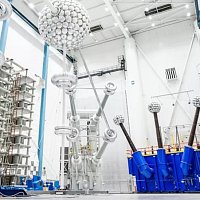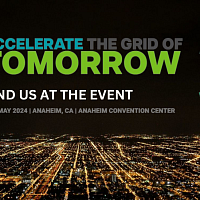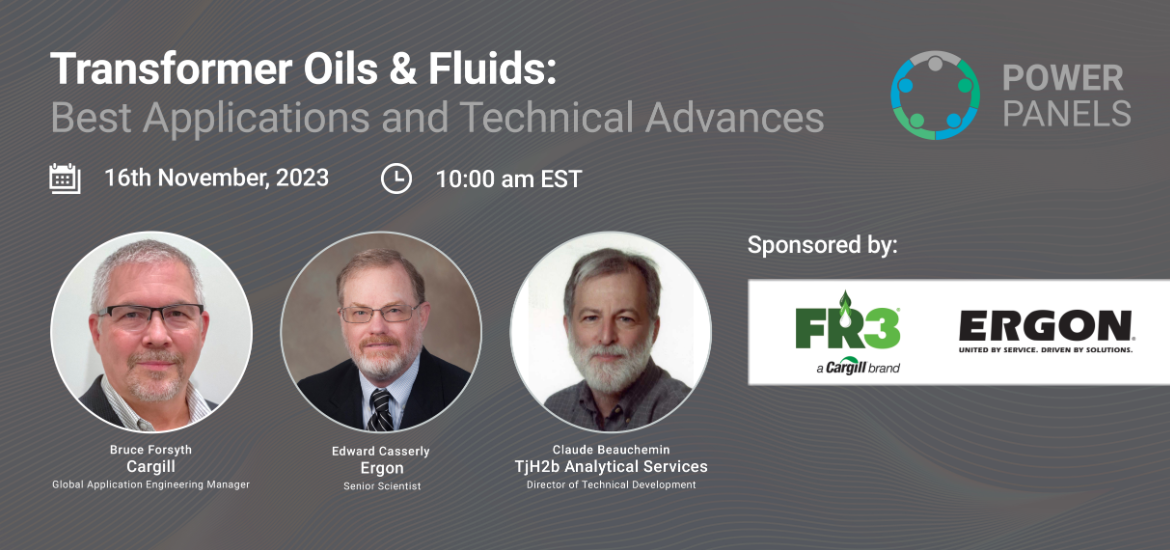
OILS AND FLUIDS EXPERT DISCUSSION
Edward Casserly, Senior Scientist, Ergon
Bruce Forsyth, Global Application Engineering Manager, Cargill
Claude Beauchamin, Director of Technical Development and Director of Quality Assurance, TJ|H2b Analytical Services
Alan Ross
Hi, my name is Alan Ross. I am the Managing Editor of APC Media. Welcome to our Power Panel on Oils & Fluids, one of our most popular topics in our digital magazines. My guests for this panel are Edward Casserly from Ergon, Bruce Forsyth, with Cargill, and Claude Beauchamin, from TJ|H2b.
Claude Beauchamin
Good day, everyone. Thank you for this opportunity to share with you our collective experience. I'm Claude Beauchamin from TJ|H2b Analytical Services. I'm a chemist by training and formation, but I've been in contact with electrical engineering all my life. I'm almost an engineer by sympathy. I graduated from Montreal University in '76. In my previous life, for almost 30 years, I was involved in transformer online monitoring both for gas and other parameters. I joined TJ|H2b in 2011, so I’ve already been Director of Technical Development for 12 years. I'm also a member for the IEEE, and more particularly today for the C57104, the DGA Guide. But I'm also a member of other organizations such as CIGRE, IEC, ASTM, and Canadian Council for Standards. I'm a member of the Ordre des chimistes here in Quebec.
Edward Casserly
I'm Ed Casserly. I received my PhD in organic chemistry from Rice University and began my career as a research chemist with Pennzoil, and I'm currently the senior scientist for Ergon Refining in Mississippi. I've been involved with R&D and technical support for specialty petroleum products for 39 years now. I've got seven US patents with Pennzoil and additional seven patents with Ergon. I'm a member of all the same organizations that Claude mentioned, IEEE, CGRE, IEC. Within ASTM, I am the Vice Chair, and this year I received the IEC 1906 Award.
Bruce Forsyth
My name is Bruce Forsyth. I'm an Electrical Engineer, and I've been working in the transformer industry for just about 36 years. Most of my career has been in the design and manufacturing of distribution and power transformers. I've had the opportunity to be involved in transformers as small as 25kV and 34.5kV class, and as large as 500MVA. I'm a member of several industry organizations, including CIGRE, NFPA, and EEE. I had the honor of serving as chair of the IEEE Transformers Committee for the 2020 to 2021 term. I am currently the Global Application Engineering Manager for Cargill Bioindustrial.
Our hope is to educate the industry as to what the options are, and then let them make the educated choice of what best fits their application and their current needs.
BETTER APPLICATIONS OF DIFFERENT FLUIDS
AR
Gentlemen, thank you so much for joining us on this important panel. One of the reasons that we were delighted that the three of you could join us is the expertise that you have demonstrated within the industry. I love the fact that you're all involved with all of different organizations that we're involved with, IEEE, CIGRE, ASTM and others.
For our first topic, where would you advise a new engineer coming into a utility, specifying new products for different classes of transformer, on which oil to specify? Is there a simple rule that she can apply, or is it just, “it depends”? Ed, let's start with you.
EC
Thanks, Alan. First off, let’s talk about either naphthenic or iso-paraffinic. You have to realize there's a full range of mineral oils out there. The original ones were the naphthenic, and then there were paraffinic oils, which had wax in them, so they had high pour points, and then there were iso-paraffinic oils. In the last few years, we had the bio-based, hydrocarbons. There's a lot of different types of molecules that are parts of mineral oils.
In addition, there's several different levels of inhibition. So, you have totally uninhibited versus high-grade inhibited. Those give you different levels of oxidation and stability. So basically, mineral oils have been around for the last century since the late 1800s, and so they've been used successfully in all applications and voltage types, including free breathing application. If you want to look at what's been used historically, it's been the mineral oils because those are the only thing that have been available. The uninhibited mineral oils are generally used in less severe, lower voltage applications, because they don't have the same oxidation stability as the inhibited ones.
But there's a few applications where they are not suitable. Recently they haven't been used as much due to non-electrical considerations. They do have a relatively low pour point, and so they're not used in buildings where high pour point liquids are being used. The use of sprinklers and fire suppression can help mitigate the risk and potential damage of fires. But if you want to be safer, you'd put in a high fire point liquid, such as the esters. They're not typically readily biodegradable, so if you're next to water or an environmentally sensitive areas, you want to shy away from the mineral oils and use the natural synthetic esters, since they are. Our hope is to educate the industry as to what the options are, and then let them make the educated choice of what best fits their application and their current needs. There's a wide range for them to choose from. I don't want to say buyer beware, but it's the buyer's choice.
AR
Buyer beware. I like that. Specify the wrong oil in a transformer and be aware of the consequences. Bruce, if you could take the same question.
BF
Motivation is a tricky thing, and what Ed alluded to is that at the end of the day, it's up to the buyer to decide what's right for their application. But I will emphasize that the fire risk is important, the natural esters have a much higher fire point. If a transformer is going to be placed indoors, or is in close proximity to other structures, natural esters are a good option to consider. In those cases, Ed mentioned the proximity to waterways, if there's a risk of a spill of any sort, the natural esters are 99% readily biodegradable and generally non-toxic to the environment. If there was a spill, there would still be issues related to preventing it, but it would prevent some of the long-term environmental damages. Moreover, for life extension reasons, and I'll mention that, again, maybe at some point, the natural esters have a tendency to keep the insulation a little bit drier if customers are looking to extend the life of a transformer- If a certain amount of overloading is required, natural esters have some characteristics that benefit that application as well.
AR
Claude, TJ|H2b is very utility-focused, correct? I mean, a lot of your customers are utility-focused, so talk a little bit about what you've seen in your career, as it relates to either of these from a specification standpoint. You're a member of organizations that write standards, so talk a little bit about that.
CB
Ed and Bruce did a nice job describing the pros and cons of both families of products, esters and mineral oils. I've been there long enough to remember the time when an ester-based oil was simply a research project somewhere. Today, it has become a choice depending on preference. As Ed pointed out, there are some criteria to follow. We do see an increase in the use of non-mineral oil in the industry very clearly. We do see new liquids, like gas-to-liquid, synthetic, synthetic materials, synthetic esters, and synthetic hydrocarbons. There is a lot of activity there.
When we talk about esters fin the context of environment and biodegradability, it's a renewable resource. And that means you're not stuck if a well has gone dry, or if a company decides that they no longer want to be in the business of transformer oil. Now, of course, as far as the lab is concerned, this presents a lot of challenges. Mercifully, the tests are the same for all types of liquid. If you do a DGA, you do a DGA, it's the same gas. But the interpretation and sometimes the analysis process are slightly different, or sometimes quite different. We also must take that into account. When we receive a sample, it's important to know what it is, because you don't process a DGA for mineral oil in the same manner that you process it for an ester-based oil. As far as a specification is concerned, again, Ed rightly pointed out that at the end of the day, this is the customer’s decision. And of course, the manufacturer of the transformer must know in advance what you want.
Interpreting the DGA data is not a simple process. There's a lot of things that go on in a transformer that affect what's in that oil.
WHY DOES IT TAKE SO LONG FOR EXPERTS TO MAKE DECISIONS?
AR
I love the fact that you set me up for the next question. I think DGA is the number one test that everybody runs, right? In the utility industry, certainly, DGA is the number one fluid diagnostic they base their decisions on. I’ve mentioned that it took six years to update the DGA guide from the transformer committee. All of you have been involved in that. Six years is a long time to be able to upgrade the guide. There's a reason why it took six years. So, Bruce, why six years?
BF
Why does it take so long? That's a great question. It takes so long because one of the great things about the IEEE and the IEC documents is they're developed by volunteers. These are people that are involved in the industry and dedicate their time to come together and analyze the information that's available and try to come, as a community, to the best technical decisions that benefit the industry as a whole. There's a lot of different opinions involved. It takes time to aggregate data. One of the issues that took a long time with this most recent gas guide is gathering the latest and greatest information.
Data that's available is key to making these decisions. Interpreting data, and Claude is an expert on this more than I am, but interpreting the DGA data is not a simple process. There's a lot of things that go on in a transformer that affect what's in that oil. And pulling these things together, getting the data to have statistically reliable results is a challenge and takes time. And then once we have it, as I said, aggregating it, and analyzing it, and coming up with the right information, understanding what that data is telling us, it takes time. There are a lot of different opinions involved sometimes and it takes time for all of those experts to express those opinions, to work them out, and to find that common story that best represents the state of technology today.
AR
Excellent. Great. Claude, he set you up now, because you see it. You see it in all of the results. And a lot of it depends on interpreting the data. As an engineer, I want to know – give me some data, but give me an interpretation so I know what it means, but more importantly, so that I know what to do, right?
CB
First of all, Alan, I unfortunately have to correct you. It was not six years; it was more like 15.
AR
I knew that, but I didn't want to say that.
CB
The work started in or around 2003 for the revision of the guide, and it got stuck. And as Bruce highlighted, it's all volunteers who work on this and the work is long. In 2006, there was a vote at the meeting, I think it was in Montreal, where they decided to simply reiterate the guide as is with some minor corrections, because they were not ready to put something new out. We voted on it in 2018 and it got published in 2019. Depending on where I put my starting point, it's more like 15 or 16 years. One of the difficulties is it is developed by volunteers, so the time that people could share with us is a limiting factor.
By the way, I want to personally thank Dave Hanson, my boss, who gave me the opportunity to volunteer. The amount of time I sank into that guide, it was just insane. Any other boss would have simply pulled the plug and said, Claude, you have a day job, don’t forget it. He let me work on it, and I have to thank him for that.
The other item that is a bit of a corollary to the fact that we're all volunteers is that it is very much like herding cats. We have a lot of different opinions, a lot of different points of view, and it becomes a bit of horse trading. Yes, we said that, but no, you could not say this, and so on, and so forth.
The data we collected, over a million and a half points of data had to accounted for. By the way, thank you for the paper that Transformer Technology published years ago on this topic. Just the work to collect the data, clean it, because you could not use the raw data as is, then process it, and then ask the question, “okay, we got this result, is it meaningful, is It is useful?” Now we have the discussion and then start the computation again if we're not happy with it. Plus. there is the complication that you might have a supplier that has various requirements in terms of privacy of the data. That was a major undertaking and I'm glad that we managed it.
AR
Excellent, Claude, thank you. Ed, you get to sum up all of that, and you can just say “ditto”, or give us your thoughts. As the vice chair of ASTM, which is also a standards organization, talk a little bit about why it takes as much time, whether it is an ASTM standard, or an IEEE, or an IEC?
EC
There are four different international committees that work on insulating liquids. You got ASTM and IEEE, which are based in the US, IEC and CIGRE in the EU. ASTM and IEC develop standards – specifications for insulated liquids. IEEE and CIGRE publish guides, like the maintenance guides. You have experts, as both the gentlemen mentioned, from around the world and from different disciplines. You have chemists and local chemists talking to organic chemists, talking to electrical engineers, talking to mechanical engineers and we don't all speak the same language. There's that. There's the education between the different experts for them to understand your point of view. It takes a while. For the specifications, we want the things to be very exact. What is the flash point? What is the pour point? We can do that and say these are all the tests that are important, but then we have to come up with a value to use. That's a little like Claude said, a little bit of horse trading as to “is the flash going to be 140 or is it going to be 145?”. And everybody has their own opinions. And it all comes down to compromise and consensus. You must work together.
BF
Let me add that when the standards are developed, it never ends. It's not like it's over. Our standards are constantly under development. The challenge is deciding when to publish whatever is available today. We're not very good at drawing a line and saying, “let's publish what we've got today”. The engineers always want to say, “no, we've got one more paragraph we need to add. We need to do one more little thing.” We're not as good as the cell phone manufacturers that every September have a new model coming out. We tend to want to try to make that document perfect before it gets published. And sometimes that takes a little longer than it should. But that's an important thing. So, once it's published, a lot of times these documents are immediately open for revision, because new information becomes available.
EC
Within IEC, we recently added a requirement for straight gassing for the inhibited high-grade oils within IEC 60296, which is a specification for mineral insulating liquids. It's only required for that one product, not for the uninhibited or the trace inhibited products, but it's something that the end users were asking about. They were always asking about straight gassing. They wanted some performance testing, and so it took a considerable amount of testing to define the test parameters that we used and to put in the limits for the high-grade mineral oils. There's a lot of discussion these days for performance-based parameters. One last thing is that there's a growing number of liquids and other components with the different types of paper. The whole system must be compatible with all the other parts of all the other components. You have to look at it as a system and not just a collection of different components. You just can't say, “well, this is the best mineral, or this is the best ester”. You must say, “this is the system”, be it mineral and paper, and all the different other components as a whole. You must make sure that everything works together.
AR
Excellent. And thank you. We do have a question from the audience. Is there an undue influence from suppliers in developing these standards?
BF
I don't think there is. In fact, I've been involved in several of these activities where we're trying to gather information and the information needs to come from many sources, including suppliers. We're really looking for the data from the users. We want to know how transformers are behaving in service. Right now, there are several surveys out trying to gather DGA experiences, but we're focusing on users and sometimes manufacturers, depending on what type of information we're looking for. But at the end of the day, what we're trying to do is gather what's really going on in real life. And so that information has to come from the users. They're the ones with the real data that we have to get. Sometimes that comes from the service providers that they've used to gather information, but ultimately, it's their data. That's what's really important, is gathering the real-life experiences and being able to turn that into a statistically reliable trend or data that can be used by the general public.
EC
Well, the ASTM D27 and IEC TC 10 are both the committees for insulating liquids and fluids. And so, by default, they're going to be dominated by the insulating people, the liquids people and the gas people. There are other committees within ASTM and IEC that deal with the transformers or the components of transformers, and those are dominated by the end users, the manufacturers and end users. But you're right in that we need more cross pollination between the liquid people and the manufacturers of the transformers and the end users. We would love to have more utilities within the ASTM D27. We have a few, but we definitely would love more. Same thing within IEC. We get pigeonholed into different groups because of the scope of that particular committee, but we welcome everybody to come in and give their input.
The data we collected, over a million and a half points of data had to be accounted for. Just the work to collect the data, clean it, because you could not use the raw data as is, then process it, and then ask the question, 'okay, we got this result, is it meaningful, is it useful?'
Watch the full Power Panel here.
Powered by
